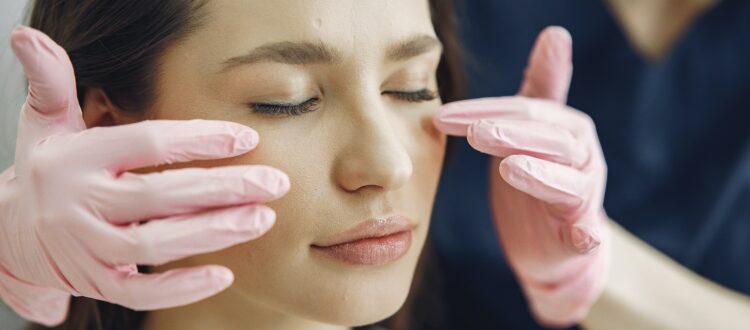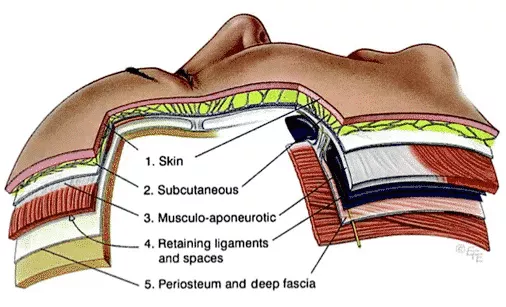MINT PDO Threadlift Offers a New Perspective on Facial Rejuvenation
Which part of the Face Contributes Most to the Appearance of Aging – Which Layer (Plane) is to Blame?
Like most artists, the “facial artist” i.e. cosmetic surgeon, must have a general routine when deciding how to approach a cosmetic problem. A fashion stylist may approach a client with thoughts about hairstyle, makeup, and clothing.
An interior designer might think about the layout of the room, the lighting, wall colors, ceiling height and flooring. But first and foremost there is the client that must be satisfied, and beauty is in the eye of the beholder. The artist must consider the clients concerns and then add on their expertise to achieve the best result for the client, or in my case, my patient.
The initial cosmetic consultation for a thread lift is always a flurry of questions and answers, starting with me asking the most important one: how would you like to see your face lifted? I hand the patient a mirror and they show me with their fingers (or sometimes their whole hand!) what would look good to them.
This gives me an initial idea of the patients expectations. It’s a starting off point to discuss the benefits as well as limitations of a thread lifting procedure.
Once I’ve asked the patient what they’d like, I then go on to decide what is actually possible. Is a thread lift the ideal treatment for this patient? Is it the easiest, least involved procedure with which to start, which will most satisfy the patients concerns?
Ideally, we’d like to start a new patient with the simplest procedures, especially if they are new to cosmetic procedures in general.
To answer this question, and to really decide if this patient is the ideal thread lift candidate, I ask myself: Which layer (plane) is to blame?
Appreciating the 5 anatomical layers of the face is one way to address the aging effect for which each layer is responsible. The anatomy of the face generally consists of five layers: Five layers of the face:
- skin
- subcutaneous fat (and superficial fat pads)
- SMAS (superficialmusculoskeletalaponeurotic system, superficial fascia and muscle)
- Fat – deep Areolar area of fat and ligaments
- Bone – deep fascial layer, periosteum and bone.
When addressing a patients cosmetic concerns due to aging, I use a special technique which I call “supinization*”, or in layman’s terms, laying the patient back. We then assess how things look when gravity is pulling back instead of down. Most people say they look way better when they are lying on their back, however, interestingly there are some who don’t. Those patients are ones that may not be the ideal thread lift candidate because their primary facial aging layer does not involve ptosis (“Toe sis”), i.e. sagging, of the superficial fat pads right below the surface of the skin.
Frequently Asked Questions and Comments during a Consultation – Results of lying back and looking in the mirror:
“I look great, make me look like this!”
This patient is an excellent thread lift candidate. They have moderately sagging superficial fat pads, and these fat pads are not too big.
“My nasolabial folds look worse”
This patient most likely has the illusion of sagginess due to a lack of volume in the deep fat pads. This situation is best approached with augmentation of the fat in the deep plane next to the bone, deep to the muscle, usually with some sort of filler.
“I look a little better, but…my skin is still not smooth”
This patient may not have sufficient fat under their saggy skin to be able to reap the greatest benefit from a threadlift. Crepey skin is due to solar elastosis and age related causes of loss of elastin. These patients would benefit more from treatments that affect the first (skin) layer, possibly a smoothing energy based treatment or neurotoxin. Possibly, the patient may have too much crepey loose skin, in which case a surgical excision ie a facelift would be the procedure of choice.
“I look worse, my cheeks and neck still look fat”
This patient has an excess of fat pads, and albeit ptotic, when pulled back, the cosmetic effect is less than ideal since the fat is repositioned in another equally unattractive place. This is typical of heavy necks and sometimes very heavy jowls. These patients benefit from liposuction or chemodissolution of the fat prior to thread lifting.
An understanding of the anatomy of the face is important when analyzing options to rejuvenate an aging face. Lying a patient back helps differentiate some of the issues by shifting gravitational forces. Most patients have varying degrees of aging changes in every layer, but as “facial artists” attempting to please our patients, we want to address the most cosmetically symptomatic, and to do so we must understand the cause of the problem.
* ”supinization” is my personally coined term for lying a patient on their back. As opposed to supination which is a term used for rotating a limb outward.

